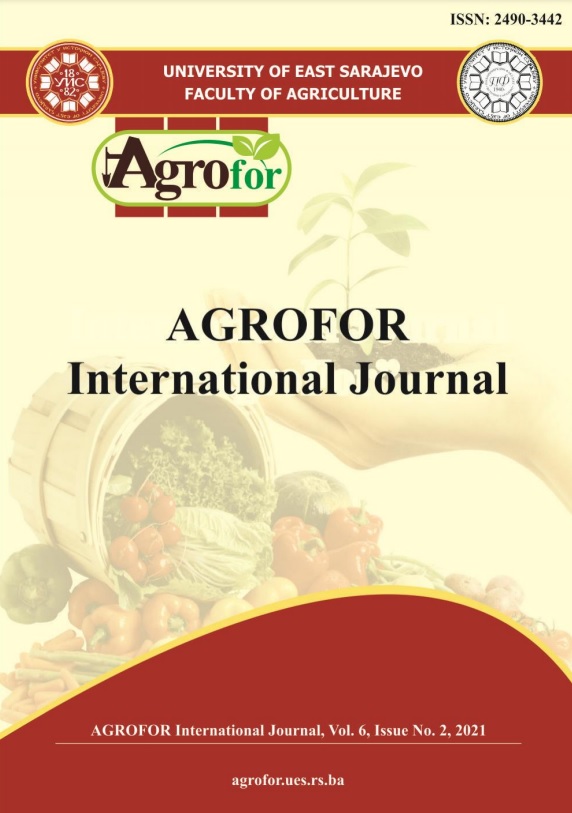NUTRITIVE VALUE OF RIPARIAN COMMON REED BIOMASS FOR RUMINANTS
DOI:
https://doi.org/10.7251/AGRENG2102098PAbstract
The extensive reedbeds, especially Phragmites australis, that spread around then perimeter of the lake Mikri Prespa, a Ramsar protected lake in the northwest of Greece, serves beneficially for several human activities and wildlife needs. Nevertheless, the apparent overgrowth and removal of this vegetation is often problematic and imposes difficulties in management and increases costs. Recent research is focusing into the use of P. australis as an alternative or complementary feed for ruminants. The aim of the present study was to evaluate the nutritive value of P. australis biomass derived from the riparian vegetation as a potential animal feed. Biomass samples were collected from six different sites of the Mikri Prespa lake in two different time periods (i.e. early August and late October 2020). The samples were analyzed for macro- and trace elements, total protein, NDF, fat and nitrogen-free extracts. Location and sampling date had a significant effect on all macronutrient concentrations with significant reductions in the second sampling period. For the trace elements zinc, copper and boron higher concentrations were observed in August, while the concentration of iron increased significantly in October. Dry matter and NDF content of P. australis was particularly high, 67.08% and 46.3% respectively; while protein content was rather moderate (8.38%, August sampling) to low (5.06%, October sampling). The results show that the nutritive value of P. australis is comparable to feeds widely used in ruminant nutrition such as wheat straw or marc, indicating a potential use as an alternative or complementary coarse feed with appropriate administration or treatment.
Keywords: Reed beds, P. australis, Quality characteristics, Ruminant nutrition.

